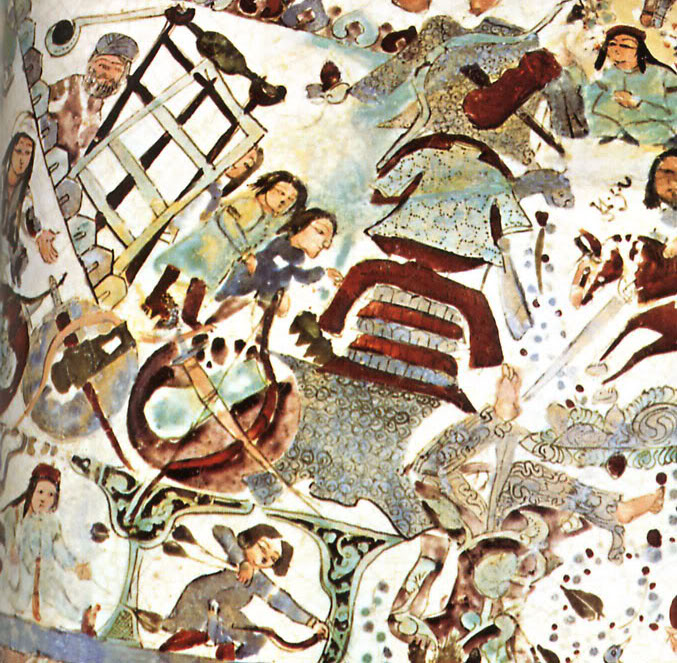Amazon Prime Student 6-month Trial

Join Amazon Prime - Watch Thousands of Movies & TV Shows Anytime - Start Free Trial Now
Reconstructed detail of Siege Engine and Armour
on a Seljuk Battle Plate, early 13th century.

Kashan, Iran, early 13th century.
Referenced as figure 392 in The military technology of classical Islam by D Nicolle
392. Ceramic bowl, early 13th century AD, Iranian, Freer Gallery of Art no. 43-3, Washington (Elg).
p174 Lamellar armour may also have been used in Byzantium in the pre-Islamic era39 (Figs. 90, 91 and 556) but its more widespread adoption after the 7th century clearly reflected Muslim military pressure40 (Figs. 212, 220A, 314, 630 and 637). A smaller but equally common kabadion lamellar cuirass was seen in Byzantium from the 10th century41 (Figs. 227, 242, 249, 314, 414 and 608. This could reflect the changing fashions of eastern Islam, where the lamellar kamaband may have been developed in the 10th century, or it could have been the Byzantine original that stimulated the adoption of this latter Iranian form of armour (Figs. 209, 241, 292, 294, 306, 347, 354, 376, 377, 385, 390, 392, 422, 446, 447 and 641).
39. Haldon, "Some Aspects of Byzantine Military Technology from the 6th to the 10th centuries," p. 20.
40. Ibid., pp. 25-26, 29 and 46.
41. Ibid., p 36.
Back to a Seljuk Battle Plate, early 13th century

